#war journalism
Photo

I know enough to know that no woman should ever marry a man who hated his mother.
- Martha Gellhorn, Selected Letters
Martha Gellhorn was a novelist, travel writer, journalist, and a pioneering war correspondent who covered most of the major conflicts of the 20th century. She was the third wife of author Ernest Hemingway.
Martha met Ernest in Key West, Florida, in December of 1936 at the bar, Sloppy Joe’s. She was 28 years old; he was 39, and she had admired Hemingway since her college days.
The following year, Martha and Ernest both traveled to Spain to report on the Spanish Civil War and began an affair that would last for years. She wrote for Collier’s, while he was reporting for the North American Newspaper Alliance.
On November 4, 1940, after fifteen years together, Hemingway divorced Pauline. Seventeen days later he and Martha were married in Cheyenne, Wyoming.
After they were married, the couple moved to Havana and Martha rented a 19th-century estate twelve miles outside the city, called Finca Vigia - Spanish for “Lookout Farm.” Hemingway would eventually buy the property and it would be his home for the next twenty years.
By the summer of 1943, the tide of war in Europe had begun to turn and Martha was intent on covering the Allied advance. In September, she left for England without Hemingway, to report for Collier’s. He begged her to return to Cuba; she urged him to join her in London, instead. In early 1944, Martha returned to Cuba, hoping somehow to reassure her husband and rebuild their marriage. It did not work. Finally, Martha told him she “was going back to London whether he came or not.”
Eventually, Ernest agreed to go. He signed on with Collier’s, thus ensuring that Gellhorn would be overshadowed at the magazine for which she wrote regularly. He also arranged to travel separately from her, arriving in London eleven days before she did. During that time he would meet the woman he would eventually leave Martha for: a correspondent named Mary Welsh.
When Martha arrived in London it was clear their relationship was over. She walked out after an argument at London's Dorchester Hotel, the only one of Ernest’s wives to leave him.
She continued to report on the war. On D-Day, June 6, 1944, she stowed away on a hospital ship, the only woman to land at Normandy. And she was there when the Allies liberated Dachau.
The following year, on March 1, 1945, Martha and Ernest officially divorced.
After the war, Gellhorn continued to travel, write, and cover conflicts around the globe. In a career that spanned more than six decades, she authored numerous novels — including a memoir and a collection of her war journalism — and several well-reviewed novellas.
In her last years, Martha was in poor health, suffering from ovarian cancer and failing eyesight. She committed suicide at her home in London on 15 February 1998, at the age of 89.
#gellhorn#martha gellhorn#quote#war#marriage#ernest hemingway#hemingway#spanish civil war#second world war#journalist#writer#books#journalism#cuba#havana#literature#war journalism#divorce#femme#beauty#icon#american#culture
72 notes
·
View notes
Text


You just know the NYT has a “style guide” for this sort of thing.
Maybe someone there should get fed up and leak it.
#News#russia#israel#ukraine#free palestine#gaza#gaza strip#journalism#journalists#usa#new york#New York times#human rights#war crimes#Al shifa#putin
21K notes
·
View notes
Text
Al Jazeera posted a long-form article about the Palestinians killed in Israeli attacks on Gaza. It talks about who they were, their hopes and their dreams.
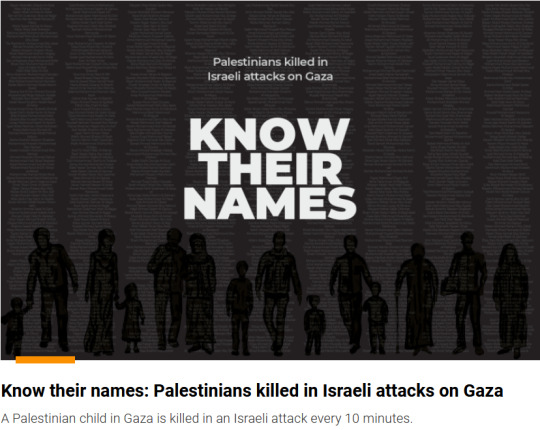
At the bottom, there is a Romanized searchable version of the list of names of people killed in Israeli attacks on Gaza.
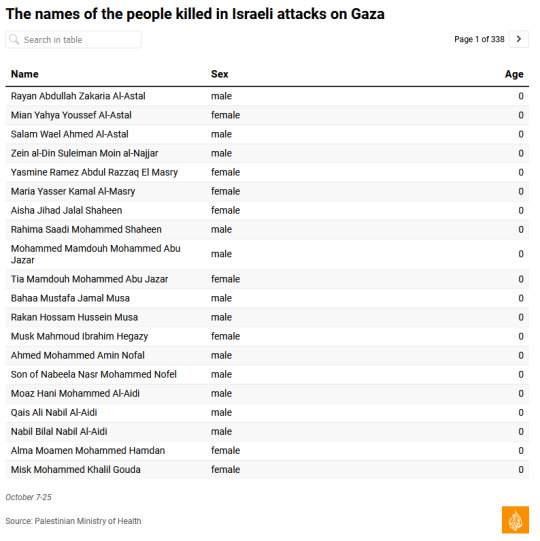
The first 7 pages are children below the age of 1.

He didn't even get the chance to be named.
This is a genocide.
FREE PALESTINE
CEASEFIRE NOW
Read the full article here:
#palestine#free palestine#gaza#free gaza#west bank#free west bank#al jazeera#journalism#israeli war crimes#genocide#colonialism#settler colonialism#israel#image id in alt text
20K notes
·
View notes
Text
0 notes
Text
Whistleblowing: Effects, Common Causes, and Importance.
“I know not with what weapons World War III will be fought, but World War IV will be fought with sticks and stones.”― Albert Einstein
This provided content discusses the concept of whistleblowing, including the definition, importance, and potential consequences of reporting illegal or unethical behavior within an organization. The content also highlights the potential positive and negative…

View On WordPress
0 notes
Text


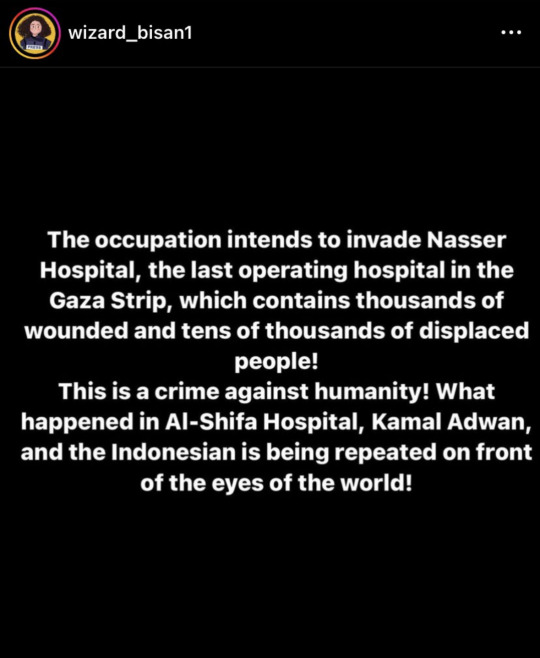
THEY’RE ATTACKING THE LAST FUNCTIONING HOSPITAL IN GAZA
BISAN CALLED FOR A GLOBAL BOYCOTT ON JANUARY 21ST!!! (Edit: to be clear, she called for one on her TikTok live, whereas this video is the one she posted on her Instagram shortly before going live)
NO SCHOOL
NO WORK
NO PLANS
NO SHOPPING
‼️‼️‼️‼️
#important#bisan#free palestine#free gaza#war crimes#genocide#israel#anti israel#idf#iof#current events#palestine#gaza#journalism#journalists#from the river to the sea palestine will be free#nasser hospital#news
2K notes
·
View notes
Text
Yasmin Porat, a survivor of the bloodshed at Kibbutz Be’eri, near the boundary with Gaza, says many Israeli civilians were killed by Israeli forces.
An Israeli woman who survived the Hamas assault on settlements near the Gaza boundary on 7 October says Israeli civilians were “undoubtedly” killed by their own security forces.
It happened when Israeli forces engaged in fierce gun battles with Palestinian fighters in Kibbutz Be’eri and fired indiscriminately at both the fighters and their Israeli prisoners.
“They eliminated everyone, including the hostages,” she told Israeli radio. “There was very, very heavy crossfire” and even tank shelling.
The woman, 44-year-old mother of three Yasmin Porat, said that prior to that, she and other civilians had been held by the Palestinians for several hours and treated “humanely.” She had fled the nearby “Nova” rave.
A recording of her interview, from the radio program Haboker Hazeh (“This Morning”) hosted by Aryeh Golan on state broadcaster Kan, has been circulating on social media.
Notably, the interview is not included in the online version of Haboker Hazeh for 15 October, the episode in which it apparently aired.
It may well have been censored due to its explosive nature.
Porat, who is from Kabri, a settlement near the Lebanese border, undoubtedly experienced terrible things and saw many noncombatants killed. Her own partner, Tal Katz, is among the dead.
However, her account undermines Israel’s official story of deliberate, wanton murder by the Palestinian fighters.
Although it no longer appears on the Kan website, there can be little doubt about the recording’s authenticity.
At least one Hebrew-language account posted part of the interview on Twitter, now officially called X, and accused Kan of functioning as “media in the service of Hamas.”
Porat also gave her account to the Israeli newspaper Maariv.
However, the Maariv story, published on 9 October, makes no specific mention of civilians being killed by Israeli forces.
And in a half-hour interview with Israel’s Channel 12 on Thursday, Porat speaks of intense gunfire after Israeli forces arrived. Porat herself received a bullet in the thigh.
Not only does Porat tell Kan that Israelis were killed in the heavy counterattack by Israeli security forces, but she says she and other captive civilians were well treated by the Palestinian fighters.
Porat had been attending the “Nova” rave when the Hamas assault began with missiles and motorized paragliders. She and her partner Tal Katz escaped by car to nearby Kibbutz Be’eri where many of the events she describes in her media interviews took place.
According to Porat speaking to Maariv, she and Katz initially sought refuge in the house of a couple called Adi and Hadas Dagan. After the Palestinian fighters found them they were all taken to another house, where eight people were already being held captive and one person was dead.
Porat said that the wife of the dead man “told us that when they [the Hamas fighters] tried to enter, the guy tried to prevent them from entering and grabbed the door. They shot at the door and he was killed. They did not execute them.”
“They did not abuse us. They treated us very humanely,” Porat explained to a surprised Golan in the Kan radio interview.
“By that I mean they guard us,” she said. “They give us something to drink here and there. When they see we are nervous they calm us down. It was very frightening but no one treated us violently. Luckily nothing happened to me like what I heard in the media.”
“They were very humane towards us,” Porat said in her Channel 12 interview. She recalled that one Palestinian fighter who spoke Hebrew, “told me, ‘Look at me well, were not going to kill you. We want to take you to Gaza. We are not going to kill you. So be calm, you’re not going to die.’ Thats what he told me, in those words.”
“I was calm because I knew nothing would happen to me,” she added.
“They told us that we would not die, that they wanted to take us to Gaza and that the next day they would return us to the border,” Porat told Maariv.
In the Channel 12 interview, Porat elaborates that although the Palestinian fighters all had loaded weapons, she never saw them shoot captives or threaten them with their guns.
In addition to providing the captives with drinking water, she said the fighters let them go outside to the lawn because it was hot, especially as the electricity was cut.
#journalism is dead#israel lies#israel is an apartheid state#israel is a terrorist state#jews against israel#ethnic cleansing#apartheid#gazaunderfire#gaza under attack#save palestine#stop killing children#stop israel#propaganda kills#genocide#palestinian lives matter#boycott israel#bds#israeli war crimes#friendly fire#icc war crimes tribunal
2K notes
·
View notes
Text
Ayat Khaddura, 27, was a digital content and podcast presenter in North Gaza. She was one of the five journalists murdered by Israel's targeted air strike on Nov 20, along with her sister and grandmother in her home. She posted this video in the knowledge that these were probably her last moments.
Video description:
A young Arab woman in a hijab and abaya speaks into her camera in Arabic in a high, frightened voice. The subtitles read: "This might be the last video from me. Today the Occupation Forces dropped phosphorus bombs on the Beit Lahia residential area, and frightening sound bombs. And uhm, they dropped letters from the sky ordering us to evacuate. So of course nearly everyone evacuated for the most part. Everyone ran into the streets in a crazy way. No one knows where they're coming or going. Uhm, we're all split up and around. Me and some others stayed at home. The others evacuated and left. We don't know where they've gone, that's for sure. The situation is terrifying, the scenes are horrifying [voice breaking as she starts to cry], the situation is extremely difficult. May God have mercy on us." [She closes her eyes as she starts to cry openly. End clip.]
[New clip.] The same young woman is seated on a desk in front of a world map wearing a jacket over a t-shirt and her hijab. Large video caption reads "Message from Ayat Khaddura who was martyred yesterday". Her voice is sad and resigned, and her face is tired and tear-stained as she speaks in Arabic. Subtitles read:
"We are human beings, just like other human beings around the world. We had many big dreams, but unfortunately today our dreams are that if we are killed we will be martyred in one piece, one body (not torn to pieces) so that people can recognise us, and we will not be cut off in pieces and put in a bag. [struggles not to cry.] When we are martyred there will be a shroud for us and we will be buried in a grave. Our dreams have become that the war will stop, that we stop hearing the sound of bombing. We never imagined we would reach such a stage and live such a life that does not have the lowest basic necessities. [Blinks back tears.] There are things we can't talk about, there are things that people photographed and did not document. When the war will end, who will continue to talk to people? What happened to us, how we lived, what we saw. Everything is being destroyed before our eyes." [Looks down with a sob. End video.]
Israel dropping leaflets onto trapped and hiding people minutes before bombing them is nothing but a sick PR exercise— there's nowhere safe to go, no telling where the bombs will drop, no way to not leave family members behind while fleeing. Many people in North Gaza decided not to evacuate to the South, not only because similar calls to go South have ended in Israeli airstrikes massacring the refugees, but the possibility of being killed while trying to make the journey, the lack of food and water to sustain them, and inability to leave old and disabled family members behind. Some like Hind Khaudary, who had the opportunity to leave the Gaza strip entirely through foreign embassies, stayed behind to continue reporting the situation unfolding in the North. Meanwhile, Israel is continuing to bomb the South, despite their own evacuation orders.
Ayat is one of the fifty-three Middle Eastern journalists killed since Oct. 7. Forty-six of them were Palestinian, most massacred along with their families. Air strikes on other journalists managed to kill only their families instead. This is the deadliest period for journalists recorded by the Committee to Protect Journalists in its thirty years of existence. In fact, Israel killed one of the CPJ's own journalists documenting the murders around the same time as Ayat.
Nearly all these are targeted strikes. Israel controls the census in Gaza and therefore has information on where everyone lives. They also track journalists cellphones and use surveillance drones and quadcopters (drone snipers). Journalists and their families are known to receive threatening phone calls from unknown numbers before they're eventually attacked.
As to why Israel is so concerned about journalists? For the same reason the Biden Administration has stated openly.
But the administration remains wary about Netanyahu’s endgame and seeming lack of a plan for what to do once Hamas is defeated. There was no sense that the pause would turn into a lengthier cease-fire, a senior administration official said. And there was some concern in the administration about an unintended consequence of the pause: that it would allow journalists broader access to Gaza and the opportunity to further illuminate the devastation there and turn public opinion on Israel.
Please spread news of these journalists' murders, show their faces, say their names. While Western journalists from CNN and BCC are embedded with IOF teams to safely "report" on Gaza, Palestinian journalists who have been reporting there for years, wearing a press jacket and helmet they know won't protect them, are documenting and broadcasting the situation on the ground, watching their colleagues being picked off one by one for the last month and half, not knowing when it will be their turn. Ayat was not a combatant. She was a young woman a lot like most on this site, young and angry at injustice, armed with only a degree and internet connection to fight for her people. She wanted the world to witness her last moments: documenting the situation till the end, her terror of dying, how she clung to her faith and wanted to live. Hers and her compatriots work is to resist letting their people disappear among the vast uncounted; she resisted it to her last breath.
Empires and colonizers win wars by reducing people to numbers. When people become numbers they become collateral, cattle, "unavoidable casualties". This is what Palestinians have fought for decades to show: "We Are Not Numbers". If the West wants to kill human beings with impunity, everyone gets to see exactly which lives and loves and hopes it's snuffing out forever.
#free palestine#ayat khuddura#gaza genocide#palestinian genocide#gaza under attack#I/p#israel palestine war#media freedom#censorship#war crimes#media suppression#journalism#war reporting#genocide joe#joe biden#us politics#world news#tw murder#tw death#knee of huss
573 notes
·
View notes
Text

Stay Safe, Hero 🫡
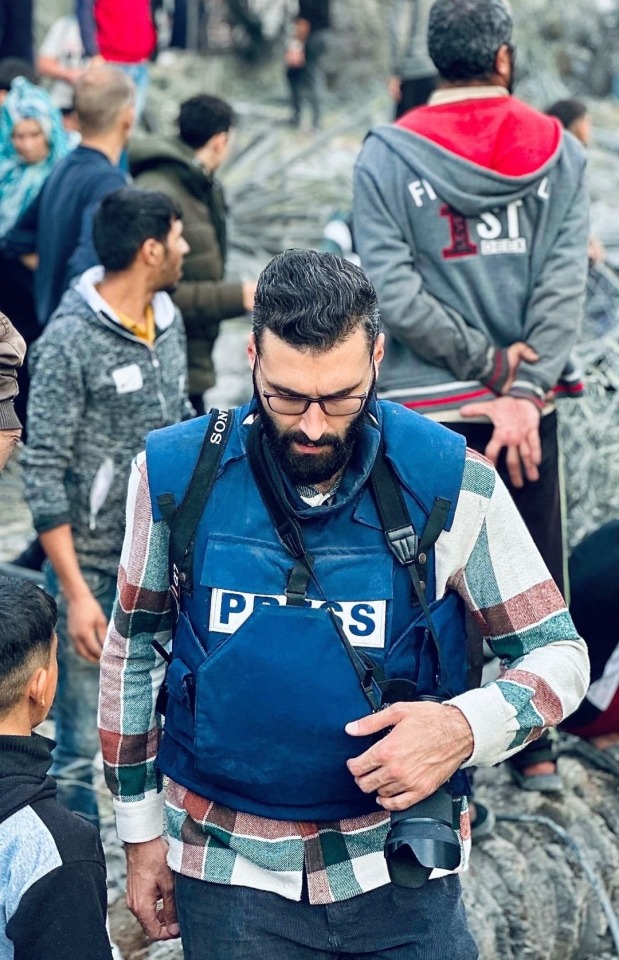
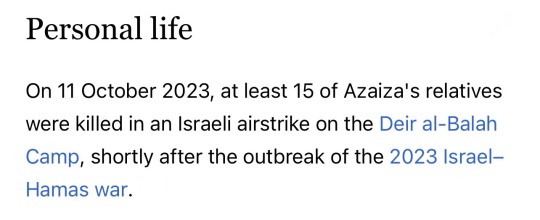
Israel has been targeting Palestinian journalists
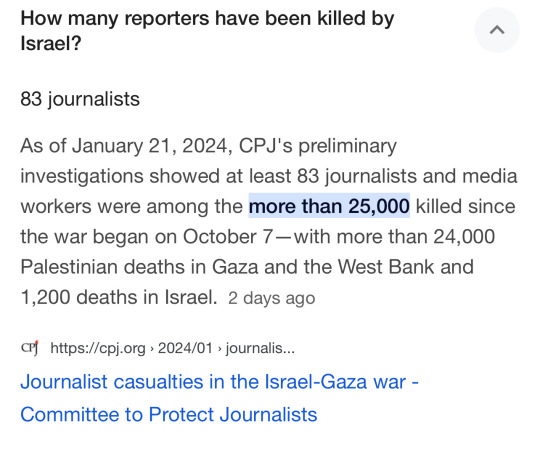






👉🏿 https://cpj.org/2024/01/journalist-casualties-in-the-israel-gaza-conflict/
#politics#motaz azaiza#palestine#gaza#israel#journalism#war on journalists#ceasefire now#ceasefire#war crimes#israel is a terrorist state#genocide#israel is an apartheid state#ethnic cleansing#never again#never again to anyone#collective punishment#bds#boycott divest sanction#settler violence#settler colonialism#benjamin netanyahu is a war criminal#war on truth#hamas ≠ palestine
441 notes
·
View notes
Text
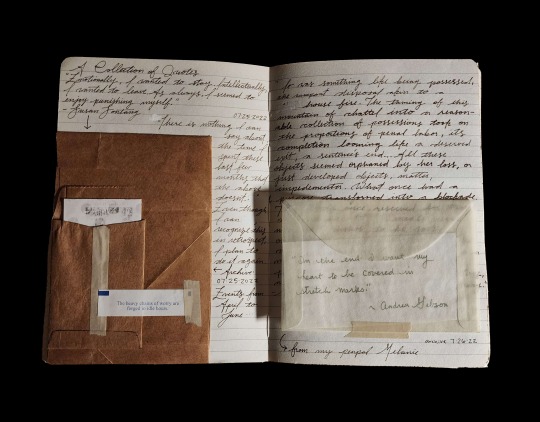
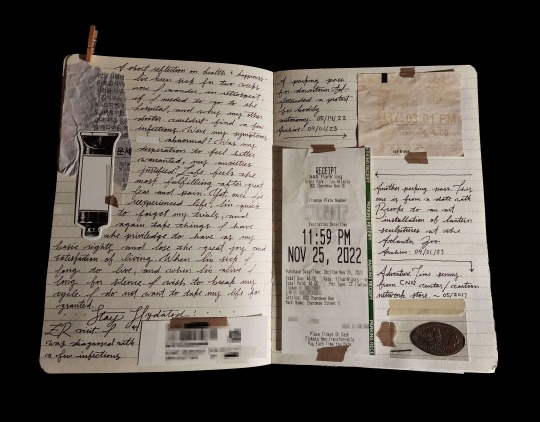
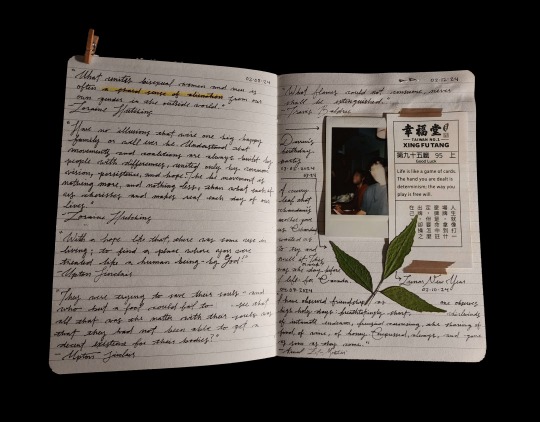

Spreads from my journal.
"I have observed friendship as one observes high holy days: breathtakingly short, whirlwinds of intimate endeavour, frenzied carousing, the sharing of food, of wine, of honey. Compressed, always, and gone as soon as they come."
-Amal El-Mohtar | This Is How You Lose the Time War
#dear diary#journaling#bujo spread#books#quotes#this is how you lose the time war#dark academia#dark academia aesthetic#romantic academia#chaotic academia#commonplace book#studyblr#academic
311 notes
·
View notes
Text

#he takes unflattering photos of alpine on purpose#to slander her#the account is a combination bucky barnes fanpage and art journal#ugH i love that photo of seb and anthony#steve rogers#alpine the cat#bucky barnes#sam wilson#captain america#winter soldier#white wolf#stucky#stevebucky#steve and bucky#bucky and steve#catws#captain america the winter soldier#captain america civil war#cacw#catfa
431 notes
·
View notes
Text

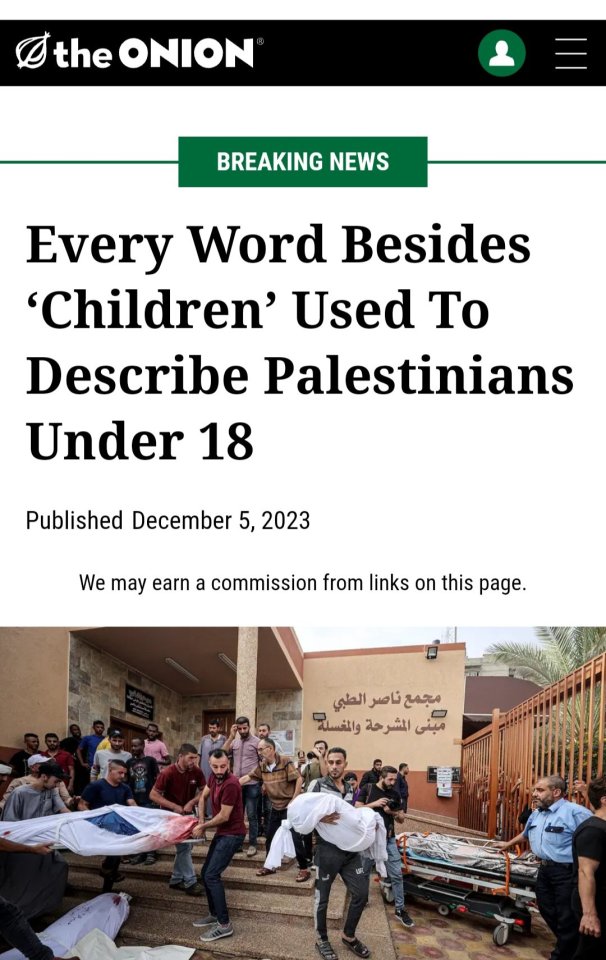
#Palestine#news#israel#journalism#middle east#democrats#republicans#politics#woc#poc#women of color#The inion#war crimes#war criminals#horror
8K notes
·
View notes
Text
"In my heart, there is a map of Palestine, and on it, every village has a story, every olive tree has a name."
#literature#dark academia#dark acadamia aesthetic#darcy#dorian gray#jane austen#aesthetic poetry#dark academia aesthetic#light academia#art journal#Palestine#war#poets#poetry#Mahmoud darwish
504 notes
·
View notes
Text

10/19/1997 Next stop: Armageddon, the River Styx, Hades... and all points in between! All aboard!
close up below!
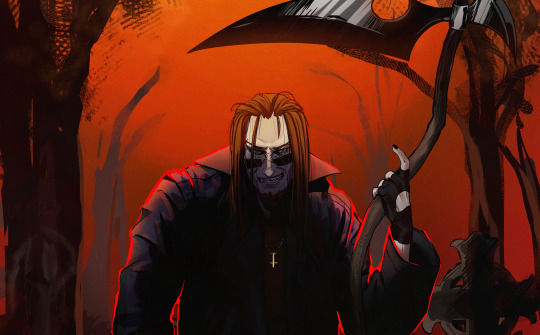
I know art is something where everyone must interpret the details in their own way and beauty is in the eye of the beholder, but here I want to talk about some details from here:
I once walked in the forest and saw three trees with eyes painted on them with white paint, it really fascinated me.
It’s more difficult with an inverted cross, but in short, this is a projection of my personal struggles.... but I’ve already come up with a little story about how, out of piety, dude ended up with an inverted cross...) I hope I’ll do this story. And the red lightning. A literal insanity in his world
I started drawing it on the power of anger. thats it.
#omfg if i would wait 11 more days it would be an anniversary of this one particular war journal note 😭😭😭😭😭#postal#postal redux#postal fanart#postal dude#redswa draws#postal 1
493 notes
·
View notes
Text
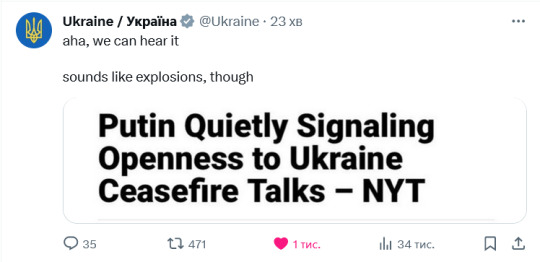
#ukraine#russia#war in ukraine#russian invasion of ukraine#politics#russo ukrainian war#new york times#journalism
332 notes
·
View notes
Text
“War is what happens when language fails.”― Margaret Atwood
This content discusses the social impact of humanitarian crises, the psychology of being vulnerable to war, and the cost of war. It highlights the devastating effects of humanitarian crises on individuals and communities, including displacement, emotional trauma, and long-lasting impacts on vulnerable groups like children.
The…

View On WordPress
#defense#offense#war journalism#warfare#earth#environment#environmental science#history#philosophy#war#war industry
0 notes